HIT CHANNEL EXCLUSIVE INTERVIEW: April 2020. We had the great honour to talk with a legendary keyboard player: Jan Hammer. He was a founding member of jazz rock pioneers, Mahavishnu Orchestra and has also collaborated with Jeff Beck, Tommy Bolin, Neal Schon, Al Di Meola, Jack Bruce, Jeremy Steig and others. He has released several solo albums and has written music for TV series and films. His “Miami Vice Theme” from the TV series “Miami Vice” reached #1 on the Billboard charts in 1985. He just released his latest solo album titled “Sketches in Jazz”. Read below the very interesting things he told us:
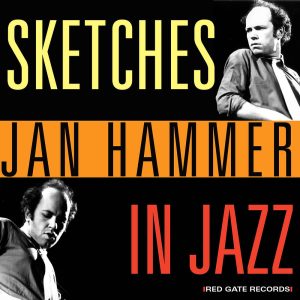 How did you come up with the idea to revisit your early jazz influences such as Miles Davis, John Coltrane and Bill Evans on your new “Sketches in Jazz” album?
How did you come up with the idea to revisit your early jazz influences such as Miles Davis, John Coltrane and Bill Evans on your new “Sketches in Jazz” album?
I have been working many years and I started remembering my roots, where I came from and I how I got started in music. I originally played just jazz piano and that was all that I did, and eventually when I came to America, I got more into rock, electronic pop and also film music and all that was so many different styles, but I always remembered that improvisation was my favourite thing to do and I just had to put together a record that shows the real, original jazz approach in many different ways.
How emotional was it for you to write “My Father’s Vibes” on “Sketches in Jazz” album?
Basically, I was hearing the sound. The vibraphone is such a beautiful instrument and I remembered when I was little, my father was playing vibraphone in jazz groups. I remember, even I was very-very young, that in our apartment in Prague, there would be a group rehearsing and I would hear my father playing the vibraphone. So, when I wrote this song I decided to name it “My Father’s Vibes”, remembering my father’s vibraphone.
What’s the idea behind the shorter pieces on “Sketches in Jazz”?
Because that’s exactly what sketches are. They are little pieces of paper where I would write an idea. Basically, is similar to the way a painter preparing a work on a large painting. You can see that the original work appeared first in sketches. So, I though it was very interesting to compare how different things came together in the end.
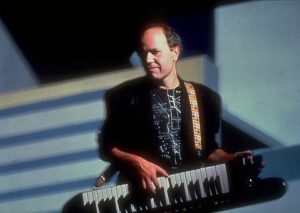 My favourite track on “Sketches in Jazz” is “First Light”. Did you use a keytar on this?
My favourite track on “Sketches in Jazz” is “First Light”. Did you use a keytar on this?
I’m glad you like it, because it is my favourite track on the album, as well. I don’t play keytar. The only that I do is that I have a sound that I get out of the synthesizer that sounds very much like a guitar. It has become my favourite sound to use for soloing. So, that’s basically a sample on synthesizer and it’s not a keytar that I ‘m playing.
Why did you decide to do a jazz version of “Magic Theater” (from “Beyond the Mind’s Eye”-1992) on “Sketches in Jazz” album?
This happened when I was working originally on “Beyond the Mind’s Eye” album and I had different ideas how to approach that melody and that composition. As far as the version that was on “Beyond the Mind’s Eye”, was more electronic pop and then I still had this idea. I remembered that it really sounded good as a jazz tune, as well, that’s why I went back and remembered how I did it and I just did it again in a jazz mode.
How important is improvisation to you?
I think improvisation makes everything possible for me. Thinking about compositions, working as a composer, it’s still partial improvisation that becomes permanent. In my case, you need to be able to improvise first of all to create new music and also to communicate when you play with other musicians: you play and you listen to other people play and then you answer them with your musical statement. So, improvisation is just about the most important thing for me in working in music.
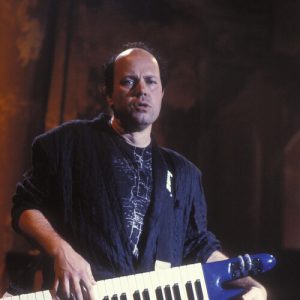 Could you please describe to us the musical vision you had on “Seasons, Pt. 1” (2018) album?
Could you please describe to us the musical vision you had on “Seasons, Pt. 1” (2018) album?
Again, it starts with sketches, as I told you about this last album. The music that was turning out when I was thinking about writing and recording, was more cinematic and it really worked well with the idea of depicting different seasons. So, I ended up with lots of different ideas, that’s why I called it “Seasons, Pt.1” and I’m working now on “Seasons, Pt.2” which it will be released sometime soon, later this year.
Can you tell us a few words about the song “Who Are They?” from Jan Hammer Group’s “Melodies” (1977) album?
Yeah, it’s interesting that you would remember that. It’s an expression of individual freedom. You know: “Nobody’s gonna hold me back. Nobody tell me anything that I know and I am just gonna do what I feel it’s right”, as far the song itself. Also, the rhythm and the bassline, all that, was just so -as they say in English- “in your face” (laughs). There was no-one holding us back.
I love your cover to Jimi Hendrix’s “Manic Depression” on “Black Sheep” (1978) album. How did you come up with that idea?
Well, that was just an obvious thing. I was so influenced by Jimi Hendrix’s playing because even though I started as a pianist, going to electronic music and synthesizer, I started playing something that it was more similar to a guitar and that tune is just so perfect and it really helped my sound to be able to pay tribute to Jimi. I met Jimi right before he passed away in New York, in his studio and he was listening to us recording and we were talking about maybe trying to get together and unfortunately he passed away. So, this is my tribute to Jimi Hendrix.
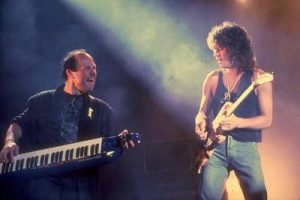 What memories do you have of your meeting with Jimi Hendrix at Electric Lady Studios when you were recording Jeremy Steig’s “Energy” (1971) album?
What memories do you have of your meeting with Jimi Hendrix at Electric Lady Studios when you were recording Jeremy Steig’s “Energy” (1971) album?
I could not believe how relaxed, a gentle soul and nice person he was. You’d expect somebody who is a gigantic superstar, a musical giant, to be not approachable and he was just very normal and a real musician. He really listened to music: he could tell that he heard the thing that we were doing and he got it. He got what we were trying to do.
Did you realise then that the Mahavishnu Orchestra music was so ahead of its time?
When we got together, obviously we knew it was gonna be different and revolutionary, in a way, but once we started rehearsing and putting music ready to be performed, it was very explosive. We felt like things were changing every day, almost like an earthquake. You felt the earth shaking (laughs) when we were playing and it was just a fantastic feeling. It was just the best!
Was it an interesting experience the Mahavishnu Orchestra tour with Frank Zappa in May 1973?
It was a fantastic combination because Frank Zappa was also a brilliant agent of big-big change and very original. So, those two bands playing on the same concert was like a perfect combination. It was amazing! I really enjoyed that.
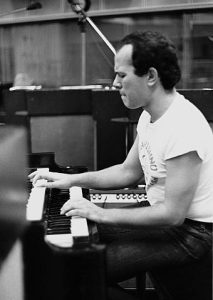 Why did the original Mahavishnu Orchestra line up never reunite?
Why did the original Mahavishnu Orchestra line up never reunite?
There was never any right time and as we grew up and grew older, I really felt that the music that we played is for younger musicians. You have to have that sort of energy and an abandon to be so free, and I just got away from it. I’m sure it would be really recreative for people, but when we did, we did the best we could for years.
I’m a big fan of “Like Children” (1974) album with Jerry Goodman, particularly of the song “Steppings Tones”. What does this album mean to you?
It was a very important album because it was the first big step after Mahavishnu Orchestra and Jerry and I, were very close musically and we were writing songs together. It was a very good release, it helped me to get free and start to try something else, because with Mahavishnu Orchestra towards the end, the music was so complicated and really full of tension. The song “Steppings Tones” was written by Rick Laird, our bassist from Mahavishnu and it’s just an incredibly intelligent piece of music. So, I was very glad to be able to include it on the album.
Is there any interesting story regarding your amazing “Blue Wind” song from Jeff Beck’s “Wired” album (1976)?
Speaking of guitar, one day I was sitting here in my house, I was playing around on my acoustic guitar and basically I wrote and came up with the whole tune just on the guitar itself, even though I’m not a guitarist (laughs). I got to find my way around and that’s how it started. When Jeff came to the house to record with us, I played it for him on the acoustic guitar and he took it and he just made it into the great hit that it was.
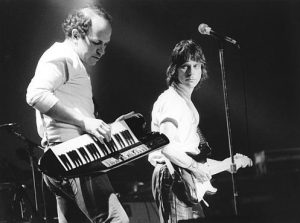 Why didn’t you meet George Martin (The Beatles producer) during “Wired” sessions?
Why didn’t you meet George Martin (The Beatles producer) during “Wired” sessions?
I never met George Martin personally, but I did speak to him on the phone several times during the production of “Wired” because the tracks were mixed by me, here in my Red Gate Studio and Jeff ended up choosing those mixes. I spoke to George about the approach to the mixing of those tunes, because he was just an incredible, genius producer. I remember speaking to him on the phone and it was a magical time. Jeff came to our house here to record the solos and the whole tune “Blue Wind” was recorded at my house.
What was the secret of your very successful collaboration with Jeff Beck?
I think we were very-very similar, even though we were coming from opposite ends of musical universe. He was a rock icon, a rock ‘n’ roll giant and I was a pretty well-known modern jazz musician, but I was trying to get more into rock and he was trying to get more into jazz and we met right in the middle. That’s why our collaboration worked so well.
Did you enjoy playing “Star Cycle” with Jeff Beck (from his “There & Back” album -1980) at the Hollywood Bowl in 2016?
I don’t remember many performances like the performance we gave at the Hollywood Bowl and “Star Cycle” with the flashing lights around the Bowl itself, the energy of the tune and seeing the people in the dark amphitheathre outdoors, it was just a magical moment. I’ll never forget it!
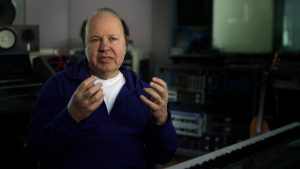 Was it a natural decision for you to start writing music for TV and films?
Was it a natural decision for you to start writing music for TV and films?
Actually, you can make the decision but you won’t succeed unless somebody hires you. I was writing music for myself, for my records with other people and then people in charge, like certain producers and directors heard my music and they asked me to work on their project. I started with smaller films and then larger and then I met Michael Mann who was starting to do the TV series that was gonna be “Miami Vice”. He told me that he wanted music that didn’t sound like anything else on TV and I had a cassette of my sketches with me and I played him one tune and that tune was “Miami Vice Theme”. Believe it or not, the theme was written before I ever heard of “Miami Vice”.
Were you surprised by the huge commercial success of the “Miami Vice Theme”? It reached #1 on the Billboard charts in 1985!
I was surprised but it wasn’t a complete shock, because by that time, the show and the music combined with the show had become a really big-big phenomenon all over America and it was a huge hit, so it was just a natural next step that the music would also reach #1 on Billboard charts.
How important was Willis Conover’s “Jazz Hour” radio show to you?
Oh, that was amazing! I loved him. He was the most amazing messenger of jazz and freedom for us behind the Iron Curtain. In the ‘60s, I would listen every night and I would have a tape recorder ready and I would record all the music that he ‘d broadcast and his voice was just like a voice from heaven. I think Willis Conover is responsible for the big development of jazz in Eastern European countries. So many musicians have to thank Willis Conover for that.
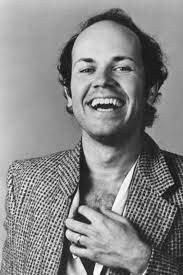 Were you flattered when Willis Conover played the Junior Trio album (with future Weather Report bassist Miroslav Vitous and drummer Alan Vitous) in the air?
Were you flattered when Willis Conover played the Junior Trio album (with future Weather Report bassist Miroslav Vitous and drummer Alan Vitous) in the air?
That was a magical moment. I just remember that the music that he’d broadcast over the radio gets a different sound and it sounds like it’s coming from heaven (laughs). I pretty felt like it was major milestone, that we made it really big, when I heard him announce us and play our tunes.
Did you have fun playing at the ARMS concerts for Ronnie Lane with Eric Clapton, Jimmy Page and Jeff Beck on the same stage in 1983?
I felt like history was being made, to get all these people on stage at the same time after all the years, they were going separate ways. So, I was just there, I was obviously enjoying myself playing the music, but at the same time, I was listening the three of them play on the same stage and it was phenomenal.
Jeremy Steig introduced you to Tommy Bolin. What memories do you have of Tommy Bolin?
Tommy Bolin was just an amazing force of nature. He was probably one of the most natural musicians I have ever worked with. He sounded like he hadn’t worked at it at all; that music just came through him, it flowed like water, like a really deep flow and it was amazing. I really loved playing with him.
 Why did you say that Tommy Bolin moved the guitar at least ten years ahead of his time?
Why did you say that Tommy Bolin moved the guitar at least ten years ahead of his time?
Absolutely! He was a revolutionary instrumentalist and it was the combination, not just the guitar, but how he worked with reverb and Echoplex and how he combined that with all the different things that Jimi Hendrix did and he made it into a completely personal style that influenced everybody for a long time.
I guess you were enthusiastic about doing the video for “Too Much to Lose” from “Snapshots” album (1989) with Jeff Beck, David Gilmour and Ringo Starr, weren’t you?
That was one of the most fun that I ever had. I made videos for my tunes many times, but that one was probably the best one. It was just so much fun doing it in London, I remember. I was amazed that I was able to gather those three guys together. They were all interested and they said: “Sure, we ’ll show up. We ’ll do it”. Yeah, that was fantastic.
How creative is it to work in the studio alone?
I’ve been working this way for most of my career. After Mahavishnu Orchestra and “Like Children”, I did my first real solo album, which was “The First Seven Days” (1975) and that was for the most part, all done by myself. I had a couple of guests on the record, but I found out that it’s my favourite way of working. I ‘ve been doing most of everything that I’ve done, just like that, by myself.
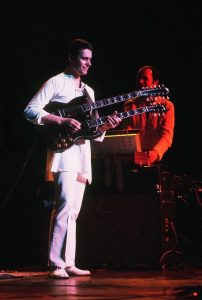 Why couldn’t Mahavishnu have happened anywhere else in the world but New York?
Why couldn’t Mahavishnu have happened anywhere else in the world but New York?
For New York, is that kind of place. Everybody comes to New York. I knew that even when I was living in Prague, that obviously if I’d make it, if I’d get over here to the United States, I’d have to come to New York and do it and keep going and get connected. I think it’s the most important thing that they really have in New York.
You have played with many different musicians in your career. Is playing with different people a kind of evolution too?
Of course, it is! For instance, a great example was Tommy Bolin. Tommy Bolin showed me things that were musical improvisations he thought that I didn’t know before and he definitely turned my head around. Same thing with John McLaughlin . John really turned my head around completely, too.
What was it like to tour with Jack Bruce in 1983?
Oh, that was fantastic. Obviously, I loved Cream and I loved Jack’s playing and singing from a long time ago and that was just something that came together and we both said: “Let’s try it! We have time”. I played with him on some other records before and we thought that it would be a great idea if we combine our musical work: He played a whole bunch of his thing and much of my thing. I think my favourite tune to play on that tour was “Crossroads”.
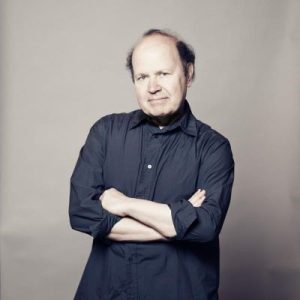 Do you have any musical ambitions left?
Do you have any musical ambitions left?
That is very hard to say. Music makes my life move forward. I never know what’s next. There is always something in music that I’ve got to put it together on the computer or on paper, whatever. So, it’s not exactly an ambition, but it’s like a life course, that keeps me going.
Why did you quit touring many years ago?
Because I did it for many-many years before. I had enough and also my two little children were born at the same time and I started working on “Miami Vice”, which was a very heavy schedule every week. So, I had to be here in the studio to produce all that. All those things combined, but the most important thing is that I just couldn’t enjoy traveling itself. The traveling was just a pain in the ass.
A huge “THANK YOU” to Mr. Jan Hammer for his time. I should also thank Mr. Elliott Sears for his valuable help.
Official Jan Hammer website: https://janhammer.com/home
Official Jan Hammer Facebook page: https://www.facebook.com/OfficialJanHammer/

